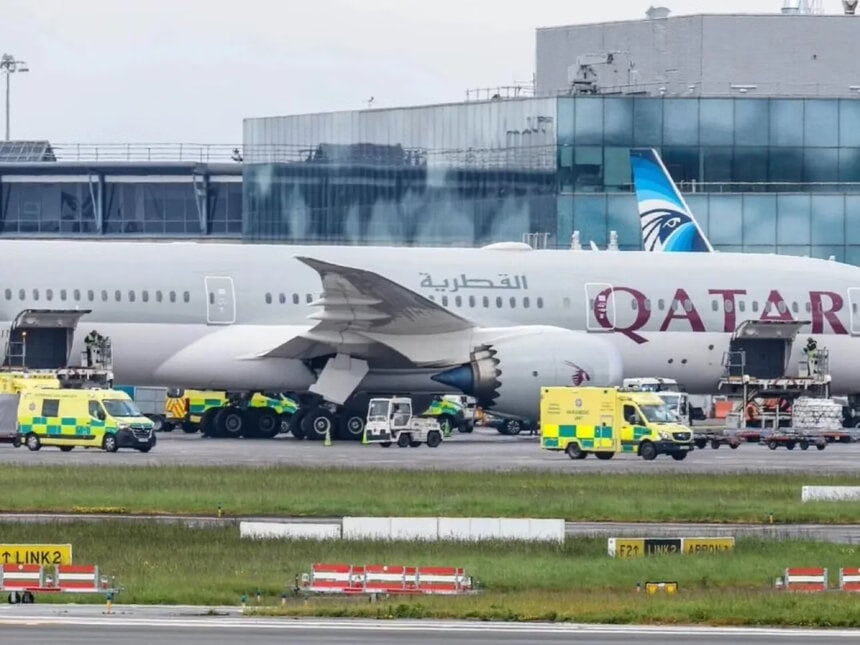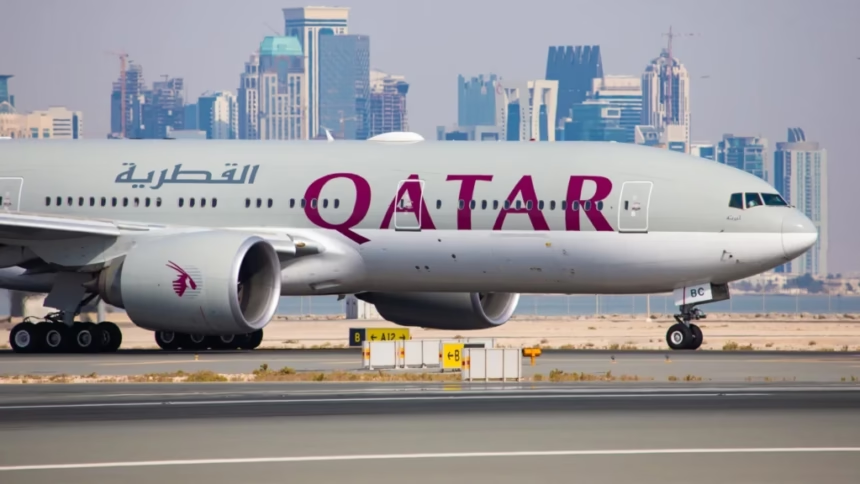AHMEDABAD — A Qatar Airways Boeing 777 bound for Hong Kong made an emergency landing in Ahmedabad after a sudden cabin pressurization problem, prompting a rapid descent and diversion.
Qatar Airways Flight QR816, with more than 300 people on board, landed safely, and no injuries were reported. The incident underscored how a technical fault can turn a routine long-haul into a race to a lower altitude.
The trouble began at about 2.12 p.m. local time, roughly five hours after departure from Doha’s Hamad International Airport at 9 a.m. The aircraft, a Boeing 777-300ER registered A7-BOB, was cruising at 35,000 feet over western India with 287 passengers and 14 crew.
Cockpit alerts indicated a failure in the pressurization system, which uses bleed air, valves, and sensors to keep the cabin at a safe pressure while cruising at high altitude. In line with procedures, the oxygen masks dropped and the crew descended quickly to around 10,000 feet, where passengers could breathe without supplementary oxygen.

Qatar Airways Pilots Acted Fast
The descent was steep and fast, designed to reach denser air within minutes, while the cabin systems supplied oxygen for the short window needed. Air traffic control at Ahmedabad declared a full emergency at 2.12 p.m.
Fire crews, ambulances, and medical teams took position along the runway. Runway 23 was prioritized, and several arrivals from Mumbai and Delhi were delayed to clear the approach.
Touchdown came at 2.32 p.m., followed by an all-clear at 2.38 p.m., and airport operations soon returned to normal.
Passengers, including families, business travellers, and tourists of many nationalities, were shaken but unharmed. One British passenger, Laura Jenkins, 42, said the aircraft dropped quickly and masks were deployed, adding that the crew stayed calm and talked everyone through the steps.
The Qatar Airways flight parked on Stand 36, and travellers moved to the terminal, where Qatar Airways provided water, snacks, and lounge access. Most were rebooked onto a relief service to Hong Kong departing at 5.30 p.m.
The Boeing 777 remained on the ground overnight for detailed checks, with engineers assessing the fault before any further flight.
Qatar Airways issued a short statement confirming the diversion. The airline said QR816 landed safely in Ahmedabad due to a technical issue, all passengers were safe, and the decision followed standard safety protocols.
The carrier, based in Doha and operating a large fleet that includes many 777s, said it had begun a technical review with Boeing and regulators.
Boeing 777 Very Safe
While the Boeing 777 has a strong safety record, pressurization events have occurred over the years.
In early 1995, during certification testing, two flights suffered decompressions linked to faulty air duct hardware, which led the FAA to impose a temporary altitude cap while Boeing introduced fixes to its environmental control system.
In June 2017, a Boeing 777 on a demonstration flight with US officials on board lost pressure and diverted for repairs. In 2018, a Singapore Airlines 777-300ER returned to Singapore after a climb issue and landed heavily after fuel dumping.
In 2019, a United Airlines 777 diverted to Gander due to a gradual loss of pressure. In September 2023, another United 777 dropped from 37,000 to 9,000 feet en route to Rome when its pressure controller malfunctioned, which caused masks to deploy and minor injuries.
Aviation safety specialists point to the fine balance of engine bleed air and valve control that keeps cabin pressure stable. Faults can arise from sensors, stuck valves, or component wear, although redundant systems and crew training usually keep such events under control.
Industry data from the Aviation Safety Network places the type’s mishap rate at a very low level per million departures, even as scrutiny of Boeing’s wider programmes has increased in recent years.
For those on QR816, the afternoon turned from a routine cruise to a tense descent, then relief on the ramp. Ahmedabad’s swift emergency response drew praise from the Directorate General of Civil Aviation, which noted the coordinated handling and safe outcome.
Investigators will now examine A7-BOB, a 15-year-old aircraft with many cycles, to determine the exact cause. Whether this proves to be an isolated fault or part of a broader trend remains to be seen. For now, operations over Gujarat are back to normal, though memories of the masks and rapid descent will linger for some time.















